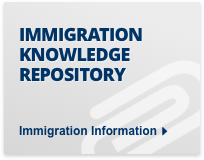Support migrant centric journalism today and donate

 Watch This Video
Watch This VideoAccording to the latest annual report, 'International Migration Outlook 2007,' by the Organization for Economic Co-operation and Development (OECD), legal migration to 20 member countries continues to rise. Approximately four million new immigrants entered OECD countries permanently in 2005, an increase of 10 percent from the previous year.
OECD Secretary-General Angel Gurría stated believes that international migration is one of the major issues in the "global agenda."
"As with many other aspects of this agenda, the international mobility of people needs to be well managed, and sound policies designed and implemented," he said. "Migration is part of the solution for labor shortages and population ageing in OECD countries, but to take full advantage of it, effective integration policies are needed, in particular in the realms of education and the labor market."
Migration flows
<$adv0> Migration flows during 2005 were highest in the United States, Spain, the United Kingdom, and Canada. However, the largest increases over the previous year were experienced in Ireland, South Korea, and New Zealand.
Temporary migration was also significant, with 1.8 million temporary migrants entering OECD countries in 2005. The highest flows were in Australia, Canada, Germany, Japan, New Zealand, the UK, and the United States - for the most part mirroring the high rates of permanent immigration to these countries.
The highest source of migrant inflows comes from family reunification. However, the report found that labor migration is generally expanding as well while humanitarian migration is declining. Labor migration accounted for 30% of permanent migration. For the European Union, much of this consisted of the free movement of labor between member nations.
International students
International study is also on the rise in almost all OECD nations, with an increase of 9% every year since 2000. There are approximately 2.3 million foreign students in OECD countries. 25% are in the US, followed by the UK, Germany, and France.
Gurría said that while OECD countries are competing for foreign students, "they are also looking to recruit students as skilled workers after they complete their studies."
This is highlighted by recent programs such as the UK's International Graduates Scheme and Ireland's Third Level Graduate Scheme, which both allow graduates of accredited educational institutions to remain in the country for a time after their studies for the purpose of finding work and entering another immigration program.
Brain drain
The report found that the skills and qualifications of migrants were generally underutilized, in particular for immigrant women. Immigrants were more likely than their native-born counterparts to hold jobs they are overqualified for.
"Most OECD countries are trying to attract and retain highly skilled immigrants, a strategy which makes sense only if their human capital is used effectively in the host-country labor market," said Gurría.
Another concern was the possible 'brain drain' of doctors and nurses from developing countries. The evidence - while mostly anecdotal - found that on average, for the year 2000, 11% of nurses and 18% of doctors employed in OECD countries were foreign-born. According to Gurría, this is the same percentage of highly-skilled migrants in the OECD-member workforce.
African and Caribbean nations were estimated to be the most affected by the brain drain problem in relation to health care.
Integration into society
According to Gurría, integration of migrants and their families needs to be a higher priority in OECD nations' immigration policies.
"For immigrants to assume their role in the growth of the labor force in many OECD countries, the general public must understand that they are part of the solution to labor market shortages and ageing populations," said Gurría. "But to achieve this, immigrants and their families have to be well-integrated into the host-country economy and society."
Gurría cited policies in Denmark, Sweden, and Germany as being models for good integration policies, such as Denmark's wage subsidies and Sweden's employer-based training programs. Germany and promotes apprenticeships to assist second-generation immigrants.
"Migration is high on the agenda of OECD member countries. In the context of today's globalize world, we need to get the policies right to increase its benefits and reduce its cost," said Gurría.
Related:
• OECD releases immigration statistics report for 2004• OECD - developed countries must do more to integrate immigrant workers
• UN Population Commission issues report on migration
• US universities losing international students, looking for more
• New Zealand economic and skills statistics published
• Facing worker shortage, Japan weighs immigration
• Immigrant Nurses in High Demand in Western Countries
• UK agencies hiring poorest nations' nurses
• Philippines losing 15,000 nurses each year
• Immigrant Nurses in High Demand in Western Countries





















